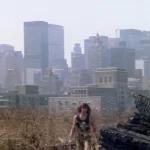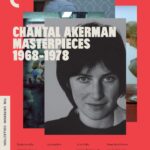15. Halloween
score by John Carpenter
Good film scores heighten the emotion of a scene or build up the tension or pretty much do whatever the filmmaker wants it to; great film scores, I think, are inseparable from the images they accompany. Few films would be as drastically different without their music as John Carpenter’s Halloween. Would it even work at all? The simple theme played on the high-end of a synthesizer in 6/4 time mixed with very deep and ominous left-hand chord playing is enough to already send shivers down a viewer’s spine, but it actually says a lot about the film, and The Shape in general. It’s a steady, driving beat – could almost be a dance number in the right context – and it reflects how Michael Myers will not stop, will never stop, he’ll always be out there, like the true boogeyman. Toward the end of the film, when Laurie Strode is running, hobbling her way through the neighborhood trying to get away from The Shape, Carpenter gives us a simple yet repetitive and percussive synth beat which, coupled with the Shape walking so slowly while Laurie runs, sends the tension up to eleven. There’s a famous story that the film was shown to people before the score was added in and nobody thought anything of it. It wouldn’t be a hit at all. Then, Carpenter wrote the relatively easy music and it suddenly became one of the most celebrated horror films of all time. Not a coincidence.




























I don’t know if this is common knowledge or not, but John Carpenter has said in interviews that the main theme was just the beat he learned to play on the bongos as a child (I guess the basic one used in teaching?) transposed to keyboard.